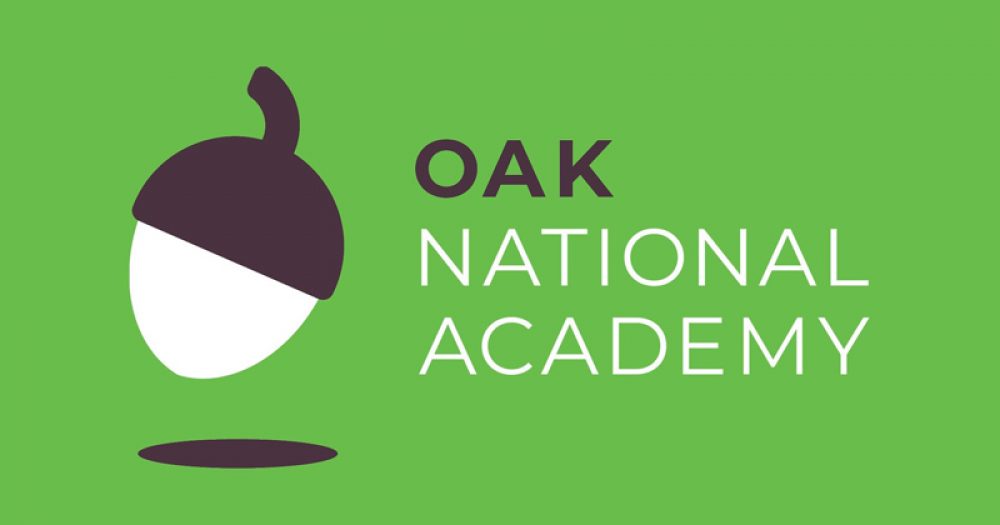Oak National Academy’s new annual report provides insight into its impact over the last academic year and plans for the future.
Oak now has more than 10,000 curriculum-sequenced lessons, has over 40,000 resources and pupils have taken part in 130 million lessons. At its peak, 934,000 teachers and pupils taught and learnt on one day (January 12).
The report draws on findings from ImpactEd, TeacherTapp and SchoolDash.
Here are 8 interesting findings:
- Core subjects and KS2 most popular lessons
Key Stage 2 lessons accounted for 44.2 per cent of all those accessed by pupils and teachers.
English and Science proved to be the most popular subjects across key stages 1 and 2: accounting for 32.9 and 28.5 per cent of accessed lessons respectively.
Meanwhile at key stages 3 and 4, science lessons were by far the most popular, accounting for 37.7 per cent of those viewed. Science was more than double the second most popular English at 14.1 per cent.
Almost half of all primary schools (48.8 per cent) used Oak in 2020-21 while 74.1 per cent of secondaries did.
It was also more popular among state schools than independents – 54.1 per cent used it compared with 39 per cent, respectively.
- It didn’t seem make much workload difference …
Research by ImpactEd found that overall teacher workload was “fairly similar” between Oak users and non-Oak users.
However 61 per cent of Oak users said the service had saved them time. In contrast, nearly a quarter said using Oak added time to their jobs. The latter were mostly senior leaders responsible for matching and transferring entire school curricula to a remote model, Oak said.
- … but Oak users are happier
ImpactEd researchers compared the wellbeing of Oak users with non-users on the Warwick Edinburgh Mental Wellbeing Scale (WEMWBS) national benchmark from 2020
They discovered Oak users had a “statistically significant higher wellbeing score” than non-users (45.9 compared to 43.7) and scored on par with the pre-pandemic national average benchmark (45.7).
- 1 in 5 primaries relied on Oak (and more changed curriculum to match)
The report stated almost three-quarters of teachers “highly rated” Oak’s curriculum sequencing quality and content. ImpactED research found just over half of users were more likely to discuss curriculum design in their own schools.
Around one in three primary schools and one in four secondaries reported changing the sequence of their curriculum to “better complement” Oak’s online resources, the report said.
Responses from 431 Oak users also revealed it was the main source of remote learning material for 20 per cent of primaries, compared with 14 per cent of secondaries.
- Pupils using lessons more likely to be ‘exceeding expectations’
Oak said limited time and resources meant it was unable to carry out direct research to assess its impact on learning.
Instead, it took a look at teacher-reported impact.
Oak-user teachers identified a “a slightly higher proportion” of their pupils as exceeding expectations, compared to a matched sample of Oak non-users (21.8 per cent compared to 16.2 per cent).
However, ImpactEd discovered the proportion of pupils falling behind was broadly similar regardless of whether teachers used Oak – at 34.1 per cent for non- users and 34.9 per cent for users.
Lessons were mostly accessed by pupils in the most deprived areas. In these ‘cold spot’ areas, 58.7 per cent of teachers said their pupils used Oak, compared with 54.1 per cent in affluent ‘hot spots’.
- £337k spent on staffing Oak
Oak is officially part of the Reach foundation, so its finances are audited and reported as part of the wider trust.
A breakdown of the audited grant period reveals a total expenditure of £4.7 million from April last year, to the end of March this year.
That includes nearly £2.2 million to people creating the lessons. Another £337,000 was spent on ‘in-house operations’ – which includes finance, human resources, legal, professional fees and academy principal Matt Hood’s salary.
While £3.7 million came from the Department for Education, another £1 million was from donations. One of these donors appears to be the Mohn Westlake Foundation, which is thanks in the report’s introduction.
- Lessons would stay ‘independent’ under DfE ownership
The DfE wants to take Oak into public ownership. Oak is now consulting its curriculum partners and stakeholders on the plans – which would include transferring the ownership of the Oak brand, platform and intellectual property to the department.
The report states that Oak and DfE want to maintain four key principles – which includes any future curriculum materials being “independent of government”.
The report also discusses how Oak has allowed specialist researchers to access anonymous data in order to aid improvements – such as the introduction of ‘pause points’ in remote learning.
Oak said it is keen to “do more and are now working with the research community to identify and share wider insights”. It revealed more insights would be shared in the coming year.
- Future use for lesson planning and class cover outlined
Oak hints at the possibility of expanding into other countries around the UK – with increased coverage across UK countries identified as a top area of improvement by teachers.
The report states that lesson planning, lesson delivery in class and setting work for absent pupils or to cover classes were potential uses for the online academy in the future.
It also will “stand ready to provide a contingency should pupils need to self-isolate or if there is further wider disruption” this year.
But Oak won’t be adding “significant new content” this year.








Your thoughts